
Nissan is now taking orders for the Ariya, its second all-electric offering following the Nissan Leaf, with four variants and two battery options available. Priced between the BYD Sealion 7 Premium and the Tesla Model Y RWD, the range starts with the entry-level 2WD Ariya Engage with a 63kWh battery, priced from $55,840 before on-roads.
This is joined by an Ariya Advance trim that has the same battery but adds extra tech and comfort features for $59,840, while the Ariya Advance+ steps up to an 87kWh battery for $63,840 before on-roads. At the top of the range sits the dual-motor Ariya Evolve e-4orce, priced at $71,840.
The Ariya’s two battery options offer driving ranges from 385km (63kWh) to 504km (87kWh), based on the WLTP standard. The Engage’s 385km is below others in its price range; real-world testing in overseas markets suggests the 63kWh variant may deliver closer to 240-270km depending on conditions. Still, this easily covers average weekly commutes, and the 87kWh format will suit those driving longer routes more regularly.
All versions feature liquid-cooled battery packs with active thermal management and come standard with DC fast-charging up to 130kW, delivering 10 to 80 per cent charge in around 35 minutes. Base models get 7kW AC charging, while a three-phase 22kW onboard AC charger is standard on the top-spec Evolve and optional on the Advance+.
The front-wheel-drive Engage and Advance trims deliver 160kW and 300Nm, while the Advance+ bumps power slightly to 178kW. With 290kW and 600Nm on tap, the Ariya Evolve trims the 0-100km/h sprint down to 5.6 seconds and gets a braked towing capacity of 1500kg.
The other three offer 750kg of braked towing. For buyers chasing all-wheel-drive grip and extra punch, the Evolve's dual-motor setup effectively doubles torque output while retaining the smoothness expected from Nissan’s new-gen EV platform.
Inside, the Ariya makes a departure from the more utilitarian cabin of the outgoing Leaf. All grades benefit from a minimalist dashboard, flat floor and ‘Andon’ soft lighting. Advance+ and Evolve trims feature a powered sliding centre console, creating a more flexible cabin layout.
Base trims feature cloth or leather-accented seats, with heated front seats and a heated steering wheel added on Advance and above. The Advance+ includes ventilated front seats, a panoramic glass roof and a head-up display. The Evolve tops the comfort list with blue Nappa leather trim, memory functions, and heated rear seats.
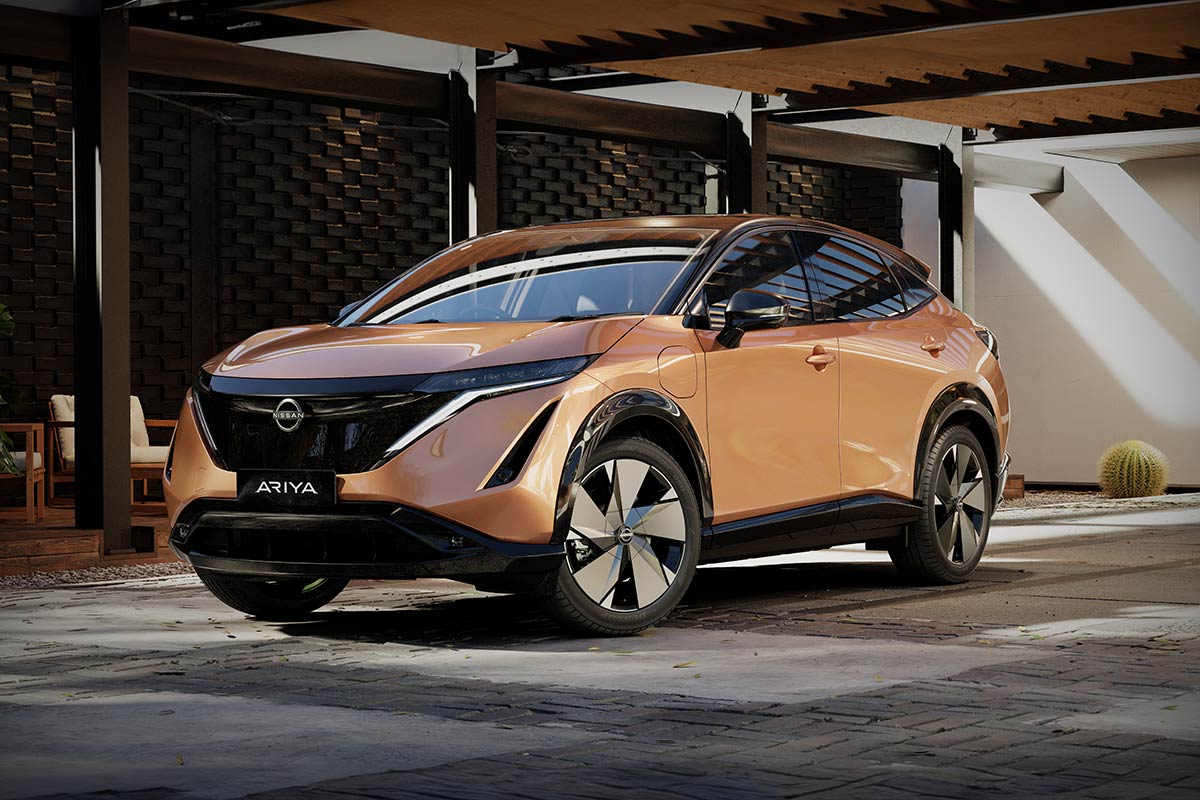
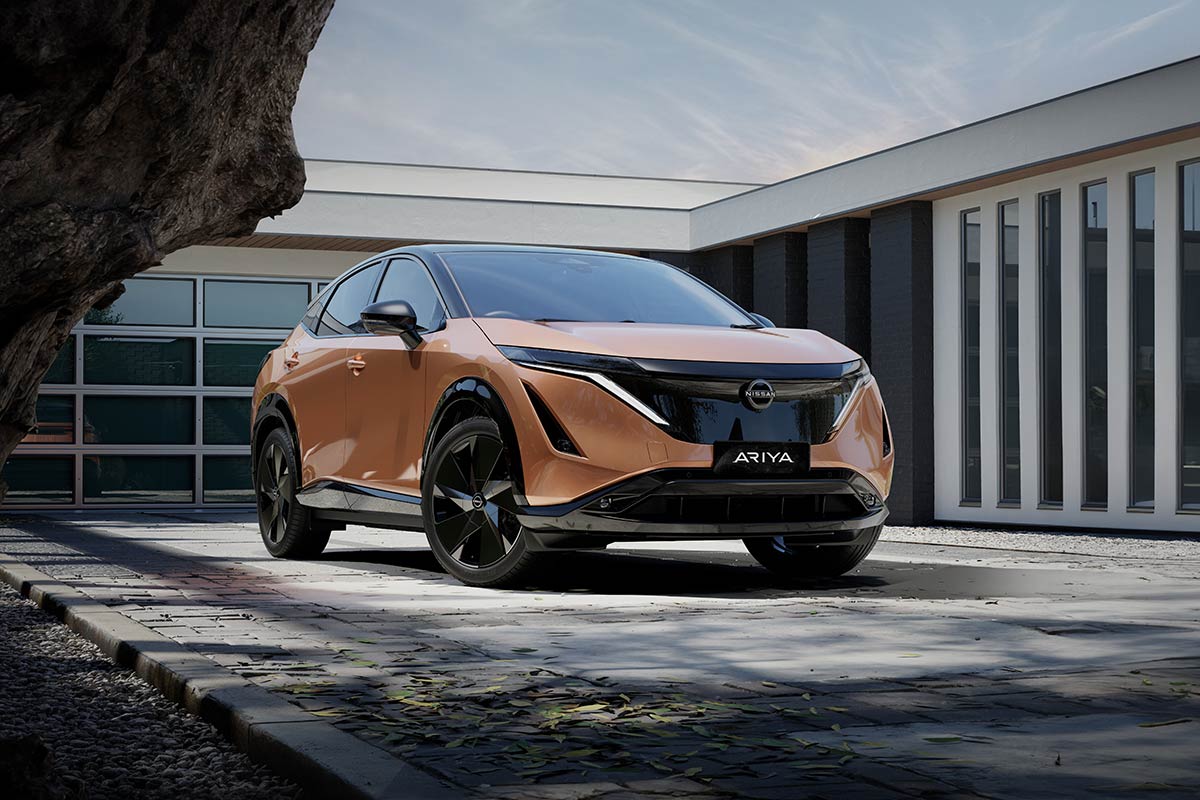
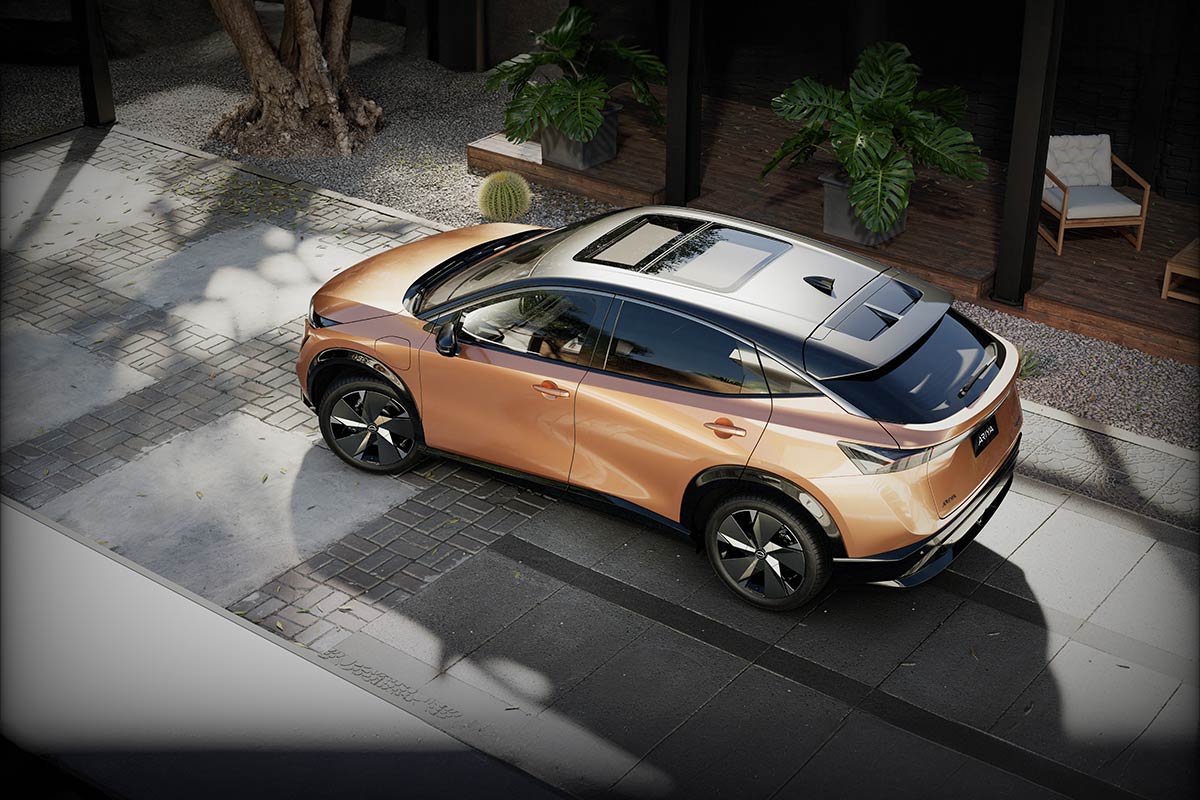
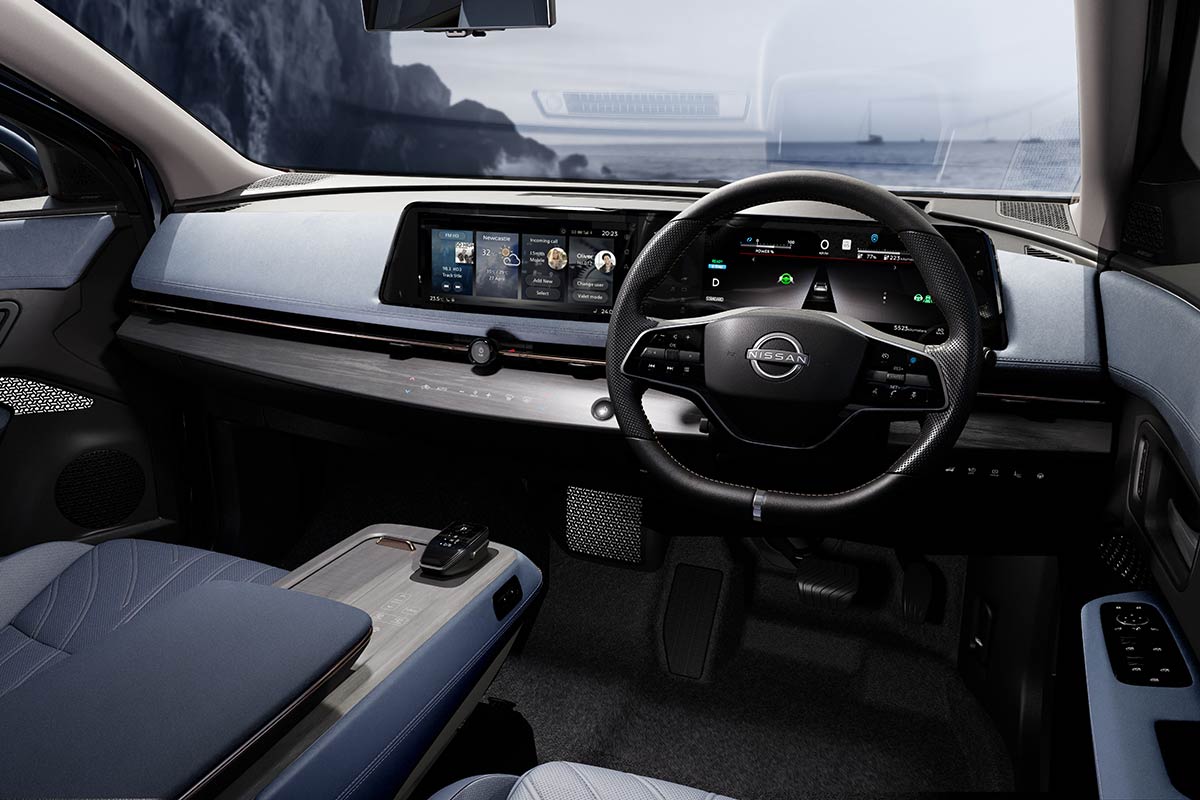
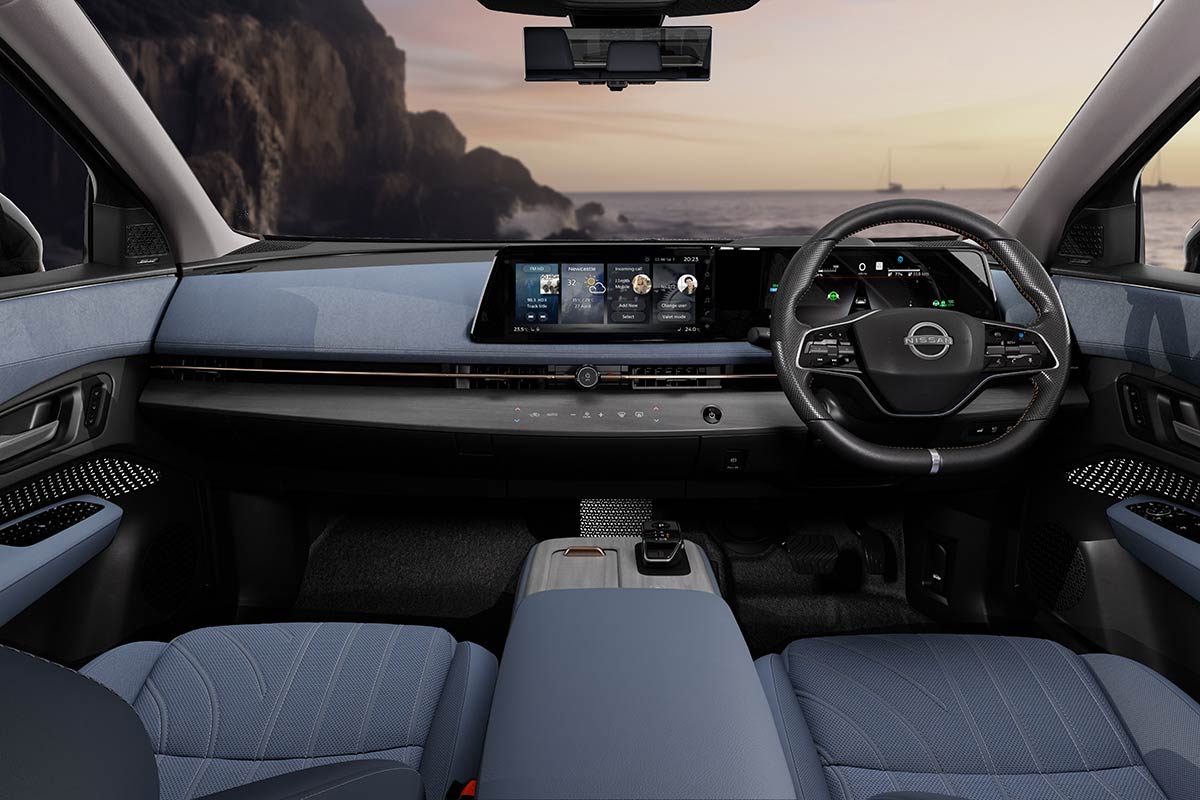
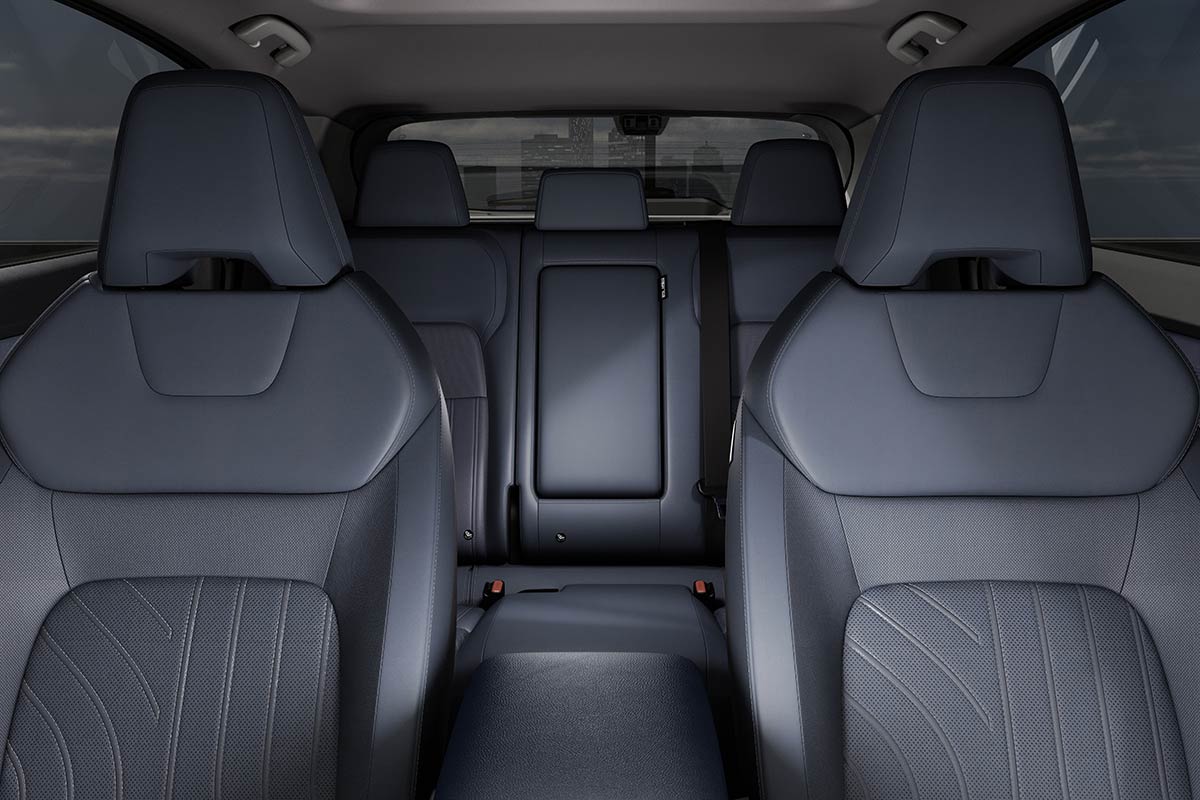
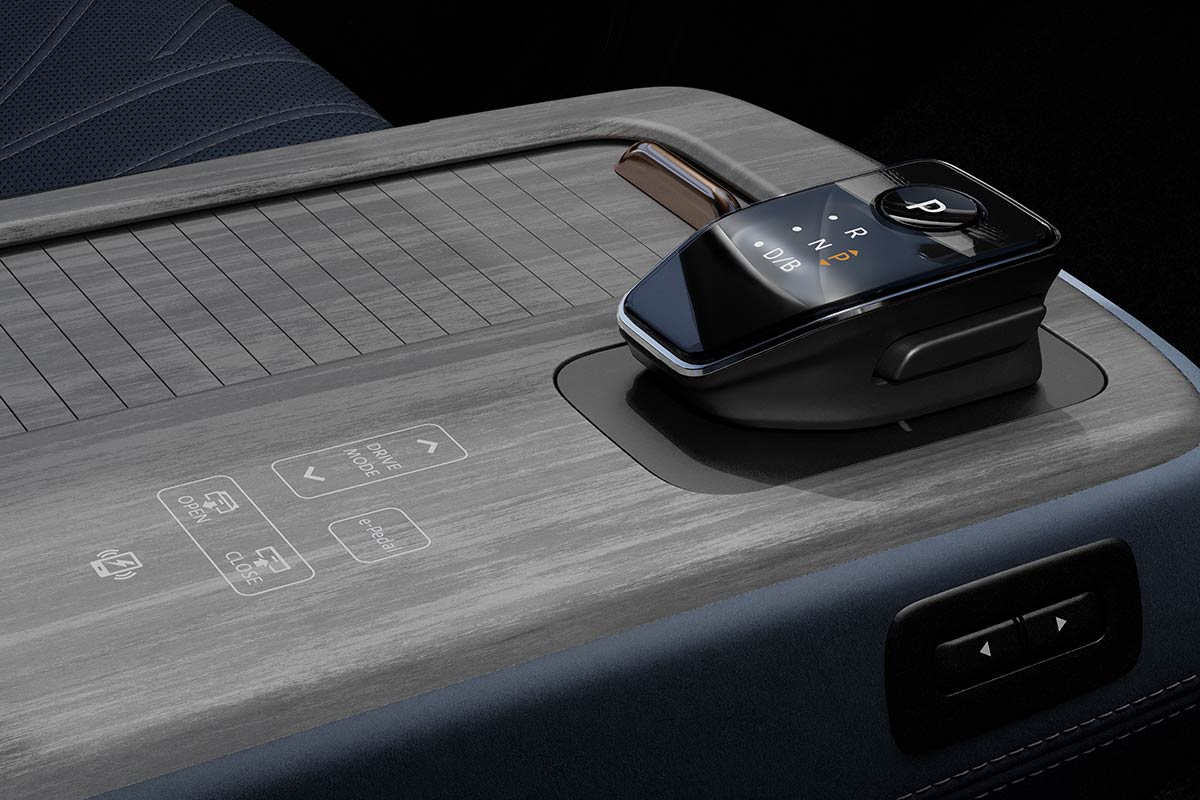
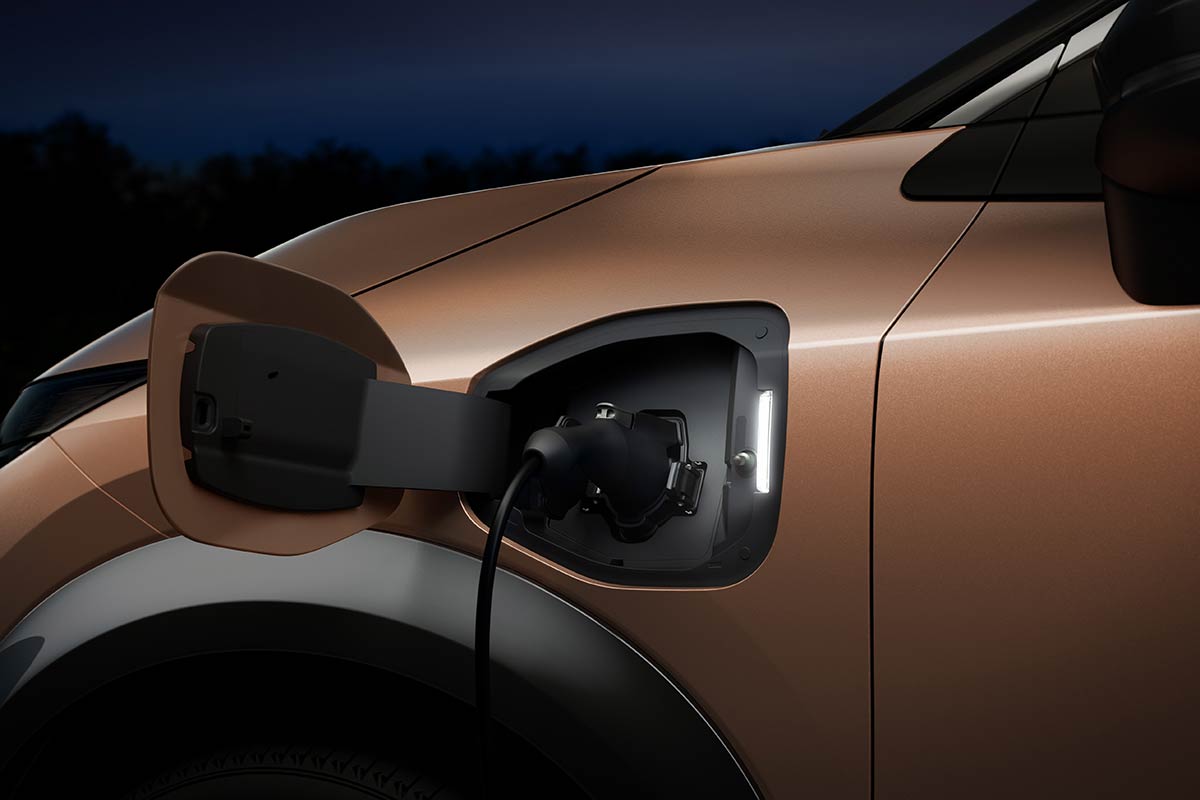
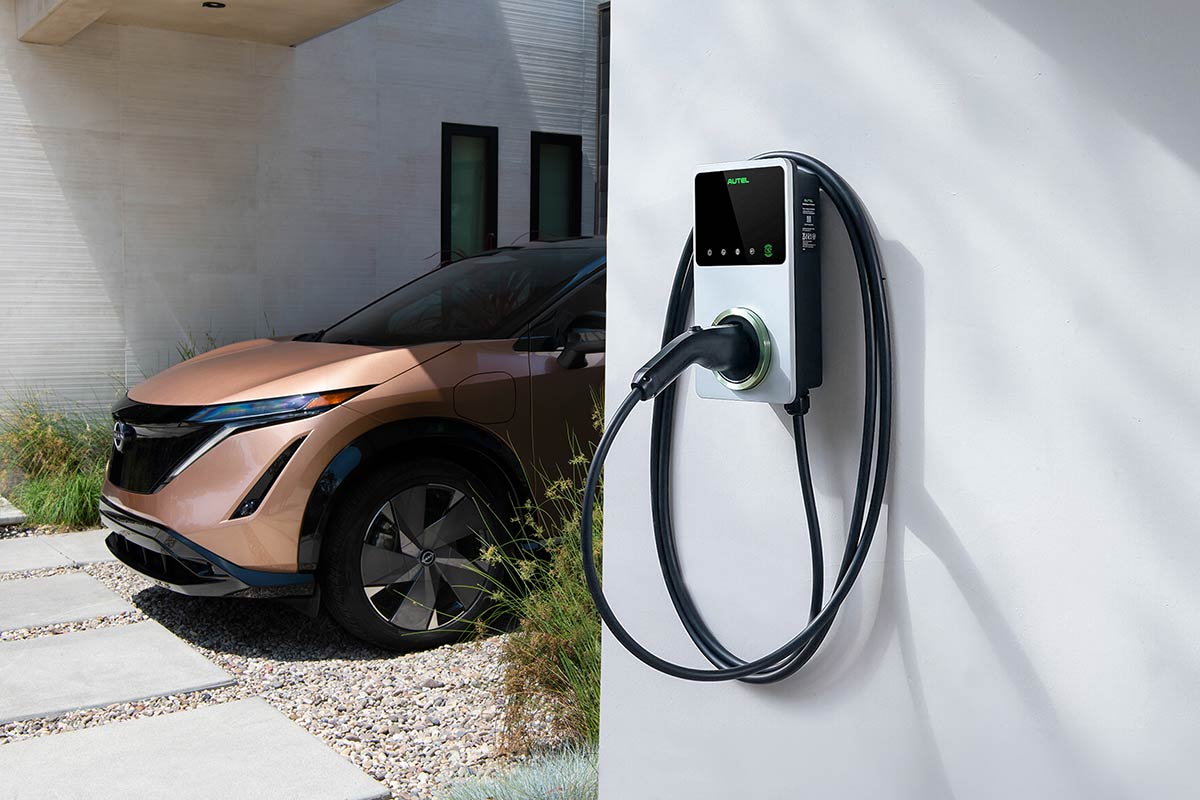
— Bridie Schmidt
With sleek contours, sharp LED lighting, and a frameless grille finished in the Kumiko pattern, the Ariya appears both clean and purposeful. Dimensions are right in the middle of the pack – 4595mm long and 1850mm wide – giving it a similar footprint to the Tesla Model Y.
Top-spec grades wear 20-inch alloys, while others ride on 19s. Matte chrome and sequential turn indicators on the Evolve give it a more premium stance.
All variants get dual 12.3-inch screens – one for the instrument cluster and the other for infotainment – housed in a curved, horizontal layout. Wireless Apple CarPlay is standard, while Android Auto requires a cable. There’s also a wireless device charger, four USB ports (Type A and C), and a six-speaker audio system as standard.
Advance and above gain a premium 10-speaker Bose sound system, which brings a noticeable uplift in cabin acoustics. Climate and drive controls use haptic touch buttons integrated into the woodgrain-inspired dash – subtle when off, illuminated when powered on.
Despite its sculpted roofline, the Ariya’s interior layout makes good use of space. The sliding console and flat floor help boost usable cabin room, while rear seat leg room is competitive for the segment. The rear seats split 60/40 and fold flat.
Boot volume figures haven't been published yet, though overseas outlets report that boot space comes in at 466 litres in the 63kWh battery options, dropping to 408 litres in variants with the 87kWh battery due to underfloor packaging changes.
Across the range, the Ariya is fitted with a comprehensive suite of active safety tech. This includes Nissan’s ProPilot lane keeping assistance, emergency braking with pedestrian and cyclist detection, rear cross-traffic alert, blind spot warning and intervention, and a rear occupant alert. Advance and higher trims add a 360-degree around view monitor with moving object detection. Adaptive headlights are standard on the top-of-the-range Evolve.
The Ariya is covered by Nissan’s 10-year/300,000km warranty when serviced at a Nissan dealer – one of the most extensive warranties in the country. A five-year capped-price servicing plan and 10 years of roadside assistance are also part of the package. The battery is backed by an eight-year/160,000km warranty against excessive capacity loss.
It’s been a long time coming, but the Ariya’s local arrival marks a significant step forward for Nissan’s electric ambitions in Australia. Priced between the base BYD Sealion 7 and Tesla Model Y, it leans into Nissan’s perceived reliability and a comprehensive safety and tech package to make its case.
The Ariya won’t likely ruffle the market’s price leaders, but it gives returning Nissan buyers and EV upgraders something genuinely well-rounded. With a refined interior, useful range and proper AWD in the top variant, it could appeal to drivers looking for a quieter, more mature EV experience – even if others get there faster or cheaper.